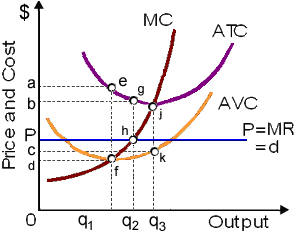Hey guys I need your idea for this query regarding the total costs as illustrated graph that this profit-maximizing pure competitor’s total cost (TC) equals area as: (w) 0Phq2. (x) 0bgq2. (y) 0aeq1. (z) daef.

How can I solve my Economics problem? Please suggest me the correct answer.